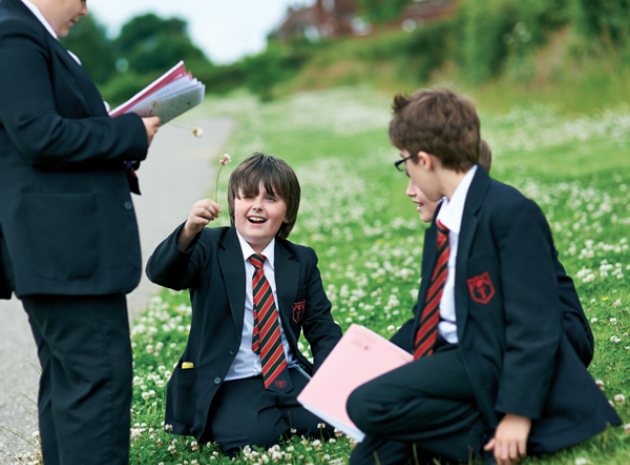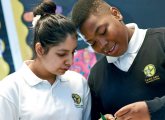Learning through play is strongly associated with the early years, but seems to get lost after Key Stage one, let alone by the time children start secondary school. This has contributed to the belief that childhood is being lost due to pressures within the educational system. Imagine an enclosed space filled with students mandated into sitting at their desks during long periods of the school day. Often, they are studying facts from books in order to achieve high grades on their next exam. Does such an educational system really have what it takes to effectively inspire students to learn the curriculum, let alone develop personal and interpersonal skills that will help them through life? Research on the benefits of outdoor learning would suggest not.
When this research is combined with the rise in “nature-deficit disorder,” a term coined by Richard Louv to describe the stress, fatigue, and poor health caused by a lack of time spent outdoors, maybe it is time to take the classroom outdoors? Not only does it connect students with nature, but it also increases the opportunity for play - allowing students to develop their physical, social, cognitive and emotional skills while having fun.
The Benefits of Outdoors Learning
The benefits of outdoor learning are numerous. Being outdoors helps adolescents (and adults) keep fit, maintain focus and attention, retain knowledge, and gain a more positive outlook on life. A hands-on approach, connecting classroom knowledge with the outside world, creates a better understanding of the real world than a solely theoretical textbook approach. “Young people find that not everything outside matches the models in textbooks,” says Dr Janet Dyment, Senior Lecturer at the University of Tasmania’s Faculty of Education. “This doesn’t mean what they’ve found is ‘wrong.’ Instead, it develops awareness of the complexities of the real world and can help to develop critical thinking skills.”
Despite the benefits of outdoor learning, Dyment describes some of the many obstacles to implementing this approach into secondary education: lack of curriculum linkage; lack of emphasis on outdoor learning in teacher training; concerns about class control; the ‘bound in’ traditional indoor view of learning; and, lack of support from those at the top of the educational system. Unfortunately, these barriers not only keep most learning indoors, but also limit the use of a key learning tool: play.
Learning through play helps students navigate the world, identify their limitations and capabilities, and develop social skills. They learn to express themselves, release tension and energy, and grow in confidence and creativity - all through the simple act of playing, either by themselves or with classmates.
Psychologist Philip Smith says, “In my opinion, the most powerful impact play has on learning is related to the experience factor. Through play, adolescents don’t passively receive knowledge, they actively test their hypotheses and reach certain insights through their direct interaction with the environment.”
As children get older, the mechanics of learning through play don’t change, but an increase in complexity is observed in the curriculum, their worldview and their capabilities for gaining new knowledge or skills. Learning through play, whether it be an extension of a lesson or an entire lesson plan, will spark interest from students and encourage them to want to learn this more complex subject matter themselves, without the need for a ‘carrot and stick’ approach.
Outdoors Play
Learning outdoors is beneficial and so is play, so why not combine the two? Some models of outdoor play activities that can be targeted towards secondary school students include: physically challenging courses that comprise the use of ropes and climbing; mentally challenging tasks that involve problem-solving or information-seeking; performing historical re-enactments or English literature plays on an outdoor stage; team building tasks; and recreational sports.
Outdoor learning needs to be enjoyable and engaging for adolescents to gain from it educationally. Learning about nature and natural laws while physically exploring the outdoor elements is a good example of learning through play. Outdoors role play can be used in countless ways, including as an addition to a history lesson or to recapitulate lessons from the classroom.
Building and art projects are also forms of play that work well in the outdoors, providing great insight into students’ motivations, interests and talents. Other alternatives include outside quizzes or charades - students can play historical figures, chemical elements, or countries. The possibilities are endless - even asking students if they can think of any ways that lessons can be converted to the outdoors will provide an opportunity to hone imagination and initiative.
The most effective form of outdoor learning through play is when teachers refrain from trying to control the entire content and direction of the play. Teachers can offer suggestions, input, information or perspective without intervening to the point where they are seen as a controlling authority figure. The latter only acts to reduce levels of creativity, spontaneity and cognitive development.
Rather than telling students what to do, there is great benefit from allowing students to shape the form and flow of learning through play on their own, under gentle guidance. Teachers do need to prepare the outside environment with material and tools that can prompt outdoors learning, however.
Should Teachers Play?
“Role modelling is critical – if you embody a playful spirit, then students will simply model that. If you can get one or two students on board, then the task of playful learning is well on the way to being a big success,” says Dyment. Also, by being an ‘insider’ in any ‘learning games,’ teachers can guide and shape learning without coming across as dictatorial. This is key to building enthusiasm and free thinking in students. It’s possible to nudge students in a certain direction or make suggestions, but sometimes it’s best to have an open-mind and let the students guide the lesson. ‘Playing’ with students also provides an opportunity to observe them more closely than traditional teaching methods: how they start activities, who the leaders and facilitators are, and who stands on the side. Students will differ significantly in behaviour, especially when playing in nature, which has a calming effect. How are they approaching the game? Which materials and mediums are they most drawn to? What are their interests? Look at the way students interact, what roles they take on, and how they project themselves. This is valuable information that can help teachers work with students on an individual level and in accordance with different strengths and needs. Outdoor learning through play cultivates self-reliance, communication and problem-solving skills, and increases self-confidence. It also helps students envision possible real-life applications of the school curriculum. Seeing their teachers play can also prove effective in strengthening the student-teacher relationship. So, there’s only really one thing left to do - get outdoors and play! Active spaces There is a strong argument for secondary schools offering designated outdoor environments and equipment for ‘organised play.’ It’s important for students to have quality and age-appropriate equipment to cultivate their learning. Benches, gardens, stages, tents, huts and multi-use play areas are just a few examples of equipment that can be designed and built by students with the help of a qualified adult. This could be integrated into technology classes. Teachers and students can craft their own outdoor learning environments, constructing their own scenery and stages for outdoor costume plays. Dr Janet Dyment Dyment says of designated play areas, “Lots of green, natural, diverse equipment – I think the natural elements are the most supportive of creative play. Trees, rocks, shrubs, gardens, vegetable patches ... this allows for a diversity of play experiences.”
You may also be interested in...









